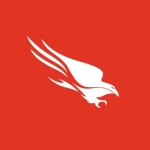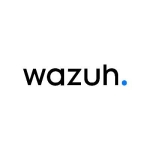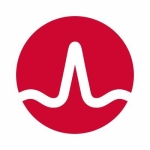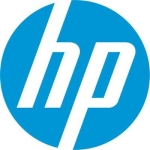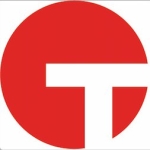We use SentinelOne Singularity Complete to protect all of our servers and cloud workloads, whether they are on-premises or hosted in the cloud.
We were transitioning from our legacy antivirus protection system, which required a lot of overhead to maintain, ensure they were up to date, and verify their performance. It also tended to hurt system performance. We therefore sought to move to a modern EDR solution that did not rely on that type of outdated technology. We migrated to SentinelOne, which gave us better protection without the adverse consequences of legacy AV products.
SentinelOne Singularity Complete is deployed on workstations, data centers, servers in the public cloud, and all of our mobile devices, which are very numerous.
The integration between SentinelOne and IBM QRadar, our security operation center SIEM, is important and works extremely well. It means that if there are any alerts on the SentinelOne platform, they will be sent to QRadar, where a stack analyst will review them. This allows us to start working on incidents quickly, without having to have people continuously monitoring the SentinelOne console. Another benefit of the integration is that it makes it easy to deploy new or upgraded versions of the SentinelOne software to all of our endpoints and servers. We simply notify the data center run by the customer success team, and they take care of the deployment. This eliminates the need for IT overhead to keep everything up to date, which is important from a governance perspective.
The integration with other SentinelOne products and third-party tools is very good.
SentinelOne Singularity Complete's ability to ingest and correlate data from our other security solutions is good. If we look at a diagram of our security operation systems, we can see that the SIEM is at the center of everything. All other products, such as SentinelOne, Chain, patch management, and abnormal security for email, feed into the SIEM, which is where the stack measures everything. Therefore, SentinelOne does not integrate with other solutions directly, but rather through the SIEM.
In the three years since we began using SentinelOne Singularity Complete, we have not had a major security incident. We have observed malware entering browsers through websites, but SentinelOne has always dealt with it effectively. Therefore, we see the benefits of the platform in the absence of any significant events. As long as SentinelOne Singularity Complete continues to operate quietly, we are happy with its performance.
SentinelOne Singularity Complete alerts when it should, and those alerts are sent to the SIEM. I don't approach EDR or SentinelOne from the perspective of wanting to reduce alerts, because I want those alerts. I rely on peripheral systems like SentinelOne to always tell the SIEM anything it needs to know. So, I'm not approaching this from an alert minimization perspective. Instead, I approach it from this perspective: If we have a high, medium, or low alert, it's up to us to decide how we're feeding our highest rate and mediums, but we don't need to feed in the lowest alerts because we don't see the benefit of that. It's up to us to make that judgment. And obviously, our high and medium alerts will be smaller, and our lows will be higher. It's up to the customer to decide how much they want to send over to the team.
SentinelOne Singularity Complete has helped free up our staff time around one day per week.
SentinelOne Singularity Complete helps reduce our MTTD.
SentinelOne Singularity Complete has reduced our MTTR by 25 percent. It is a more reliable product, so we receive alerts and respond to them more quickly than we did with the previous product.
SentinelOne Singularity Complete has reduced our organizational risks by five percent.
The most valuable aspect of SentinelOne Singularity Complete is the protection it provides. We get endpoint protection without the IT team workloads and the negative impact on end-user rotation servers. This is because of the way SentinelOne has implemented the technology.
One of my criticisms of SentinelOne is the Ranger functionality. If Ranger were part of the core product, we would be able to identify endpoints or servers that need to be protected with our licenses. However, to get Ranger, we need to buy more licenses, which doubles our costs. I would like to have Ranger, but I challenge the way that SentinelOne licenses it. I believe that Ranger should be a core part of the product. If we run Ranger today and find that 100 devices on our network are not protected by SentinelOne, we would then need to add on those 100 licenses to cover them.
The licensing model is too complex, whether we agree with all parts of it or not. Everything is now offered as a service, so the console and the licensing model can be improved to make things easier, especially when updating new versions of the software.
I have been using SentinelOne Singularity Complete for three years.
SentinelOne Singularity Complete is stable.
SentinelOne Singularity Complete is highly scalable.
We are happy with SentinelOne's technical support.
We previously used a legacy solution. The migration over to SentinelOne Singularity Complete was relatively trouble-free.
Once all testing was complete, the deployment was straightforward. Eight part-time employees completed the deployment in three months.
The only return on investment we can point to with any EDR is that we have not been attacked.
SentinelOne Singularity Complete is reasonably priced. Compared to other products I've used in the past, such as CrowdStrike, it is significantly less expensive. I can easily find evidence of this price difference, so I believe that SentinelOne is a fairly priced product.
I would rate SentinelOne Singularity Complete eight out of ten.
SentinelOne Singularity Complete is a mature solution of the highest quality.
We have deployed SentinelOne Singularity Complete worldwide in airlines from Australia, throughout Europe, and across Africa in a complex environment.
We have 4,500 endpoints and around ten active users.
The maintenance level for SentinelOne Singularity Complete is relatively low.
SentinelOne is good as a security partner. They do exactly what we expect of them and it protects us.
I would always conduct a proof of concept for these types of products, as each environment is different. Even though SentinelOne Singularity Complete works well, a POC should always be done.








